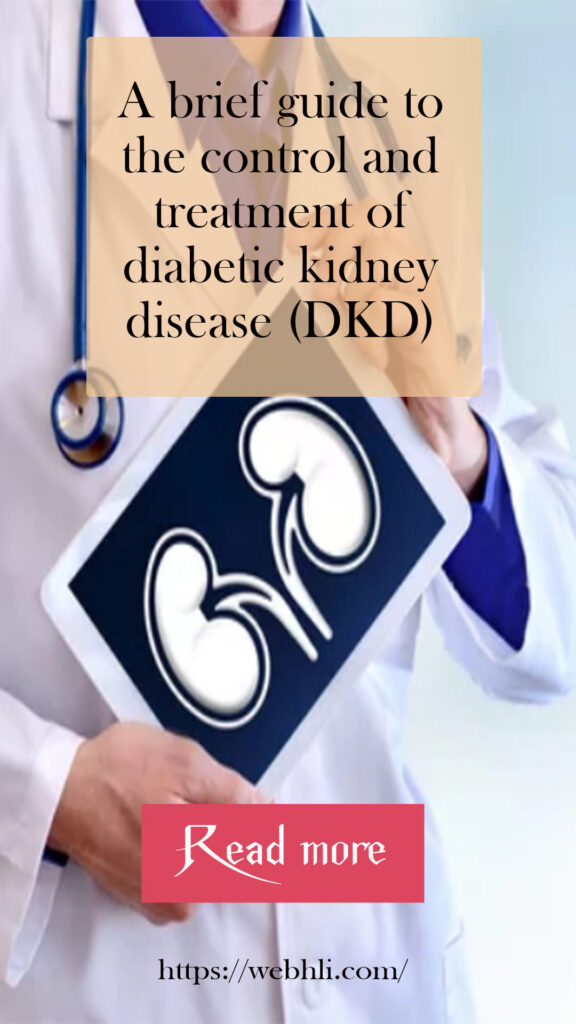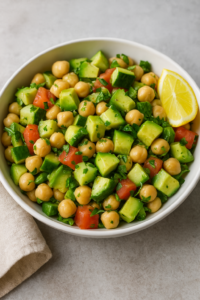
What are the treatment approaches for DKD?
The cause of DKD is unknown. The current treatment measures are mainly made in an effort to control the risk factors of DKD, which includes poor blood glucose control, poor blood pressure control, hyperlipidemia, hyperuricemia, obesity, smoking, socioeconomic status, and lack of exercise.
1- Blood glucose control
According to the 2018 American and European Diabetes Association consensus on T2DM hyperglycemia management, for T2DM patients with CKD, if their blood glucose level is still not normal after administration of metformin and if the eGFR is at an appropriate level, SGLT2 inhibitors may be a good choice. And in cases where SGLT2 inhibitors are intolerant or contraindicated, GLP-1 receptor agonist should be selected.
2- Controlling blood pressure
Antihypertensive drug of choice for DKD patients are angiotensin converting enzyme inhibitors (ACEI) and angiotensin-receptor blockers (ARB).
3- Blood Lipid Control
For non-dialyzed DKD patients, statins are preferred. It is not recommended to start statin therapy in dialysis patients without statins, but dialysis-dependent patients who have started statin therapy can continue to use it unless side effects occur.
4- Lifestyle interventions
DKD patients should reasonably control protein intake, which is about 0.8 g/kg/d, limit salt intake to <6g/d and quit smoking. It is recommended to exercise 30 minutes/day, five times a week. For obese or overweight T2DM patients, it is recommended to reasonably reduce weight through diet and exercise. However, for patients with CKD stage 4-5, it remains controversial as to whether weight loss is beneficial or not.
Check out these related articles, too:
What You Should Look Out For For Kidney Failure Symptoms?
Kidney Failure Treatment Without Dialysis
Kidney Diet Secrets That Can Reverse Chronic Kidney Failure
The Effects of High Potassium For Kidney
What Is A Healthy Kidney Diet Plan
Diet Tips For People With Diabetes and Kidney Disease
Are Renal Insufficiency And Kidney Failure The Same Thing
5 Natural Supplements For Chronic Kidney Disease
Bitter Melon Recipe For Diabetes
Early dawn: new SGLT2 inhibitor of hypoglycemic agent has renal protective effect
Many large-scale studies have shown that the new hypoglycemic agent SGLT2 inhibitor has a renal protective effect. Post hoc analysis of the EMPA-REG study showed that compared to placebo, empagliflozin slowed the progression of kidney disease and reduced the risk of renal composite endpoints (doubling serum creatinine, renal replacement therapy, or death from kidney disease) by 46%. The exploratory endpoint of the CANVAS study showed that, compared to placebo, canagliflozin reduced the risk of renal composite endpoints (continuous doubling of creatinine, ESRD, and death from kidney disease) by 47%, and the risk of albuminuria progression by 27%. The DECLARE study presets a secondary endpoint that shows that dapagliflozin reduces the risk of renal endpoints (eGFR reduced by ≥40% and
Potential research: new kidney protective drugs emerge
It is currently believed that oxidative stress, inflammation and fibrosis contribute to the development of DKD. The development of new renal protective drugs has focused on endothelin-1 receptor antagonists, mineralocorticoid receptor antagonists, antioxidant stress drugs, anti-inflammatory drugs, anti-fibrotic drugs and multi-factor targeted drugs.
Endothelin-1 receptor antagonists produce vasoconstriction, pro-inflammatory and podocyte injury-related effects through ETA receptors, activate ETB receptors, cause vasodilation and activate NO. Phase II clinical trials conducted in DKD patients have shown that the selective endothelin-1 receptor antagonist, atrasentan, can significantly reduce proteinuria while increasing the decrease in urine albumin-creatinine ratio (UACR). Finerenone is a new generation of oral mineralocorticoid receptor antagonists. ARTS-DN results show that finerenone can significantly reduce UACR in a dose-dependent manner. The multi-factor targeted drug Klotho has been shown to have renal protection. Animal studies have shown that over-expressing Klotho can significantly improve renal fibrosis in DKD mice, and inhibit urinary protein levels by inhibiting fibrosis and epithelial-mesenchymal transition. Clinical studies have shown that recombinant human α-Klotho (0.3 mg/kg) can significantly improve renal function and renal fibrosis. Other new drugs such as TGF-β inhibitors, phosphodiesterase inhibitors, and serotonin 2a receptor antagonists are also in clinical research.
Good Energy Food for Diabetics
10 Simple Food Concepts Every Person Living With Diabetes Should Know
Making Cheesecake For Diabetics
Enjoy the Taste and Benefits of Diabetic Foods
Will The Mulberry Leaf Help Your Diabetes?
5 DIABETIC FRIENDLY SALADS Some Tasty
DIABETIC LEMON COCONUT COOKIES Some Tasty
50 Healthy Diabetic Recipes That Are The Best
Conclusion
The etiology of DKD is not clear. At present, the main treatment is to control risk factors, but the long-term efficacy is not very satisfactory. In the clinical treatment process, it is necessary to take into account multi-factor common intervention, multi-pronged approach, and comprehensive management. Fortunately, there is increasing evidence of independent renal protective effects of new hypoglycemic agents, which definitely brings good news to DKD patients. However, a large number of clinical studies on DKD pathogenesis-related drugs are still needed in order to prove their effectiveness and safety.



 Protected by Patchstack
Protected by Patchstack